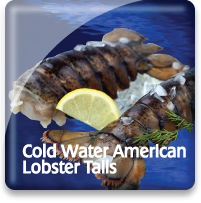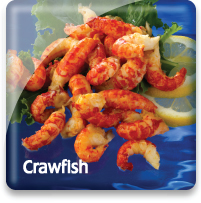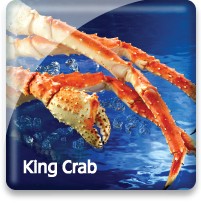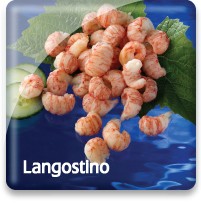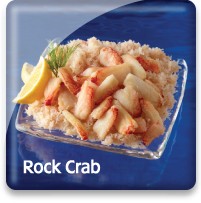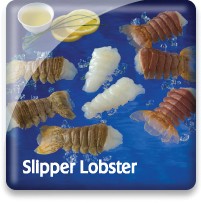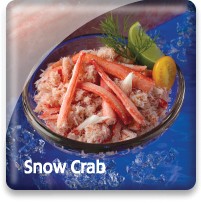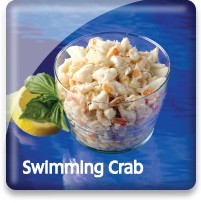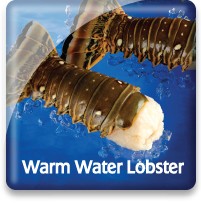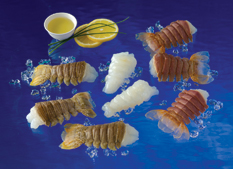
Slipper Lobster

Market Name: Eating QualitiesThe meat is pearly white and translucent. The delicate flavor is often times sweeter than that of other lobster species, and the texture has been characterized as a cross between a lobster and a shrimp. They’re typically prepared grilled, broiled, steamed or baked.
Slipper lobsters are sometimes referred to as “mitten lobsters” or “bugs.”
|
Description & CharacteristicsThe standard for value-priced Lobster, the Brown and Pink-Shelled Slipper Lobster is a retail bargain and a restaurant trademark. The thinner-shelled Brown will yield a few more edible bites and thus demands a slightly higher price. The Slipper Meat is processed from the Pink-Shelled Tail and is especially suitable for broiled open-faced style sandwiches. Slipper lobsters, also called flat, locust, Spanish, shovel-nosed and bulldozer; Australians call some of them “bugs;” are scattered throughout many of the world’s warmer coastal waters, but nowhere in large quantities. They are distinctly different from spiny lobsters, and generally priced less. The major commercial species are Scyllarides brasiliensis from Brazil, Thenus orientalis, and Ibacus ciliatus. Thenus orientalis The Flathead Locust Lobster is found in the Indo-West Pacific region, from the east coast of Africa to China, southern Japan, the Philippines and tropical Australia. They inhabit waters in a depth range from 8 to 70 meters, but usually found between 10 and 50 meters. They prefer a soft bottom comprised of sand or mud, or a mixture of the two.Ibacus ciliatus The Japanese Fan Lobster is scattered about the Indo-West Pacific region; found mostly off the coasts of Japan, Korea, Taiwan, the Philippines and Thailand. They prefer deeper water than other slipper or flat lobster species; found in a depth range from 49 to 314 meters, but mostly between 100 and 250 meters. The species is found on soft substrates of sand, mud or clay. Carapace lengths vary. The males range 4 to 7.6 cm, and females 4 to 8 cm. The tails are small, sumptuous, and considered great value-priced alternatives to other warm and cold water lobster tails.
Slipper tails are sold with shell, or as peeled and deveined meats. Slipper lobster tails are graded under 1 oz, 1–2 oz, 2–4 oz, 4–6 oz, and 6-8 oz. Slipper meat is available graded under 1 oz and 1–3 oz. Other Resources |
Handling Instructions for Slipper Lobster
Slipper lobster is offered as raw extracted tail meat and as whole shell-on raw lobster tails. Our IQF slipper lobster tails and meat should be stored at or below 0°F (-18°C) and then thawed properly when ready to cook. The frozen shelf life is 18 months. Links to proper seafood handling instructions: NOAA - Fish Watch: Handling Seafood and A Consumer Guide to Safe Seafood Handling.
Thawing Slipper Lobster
Slipper lobster tails and meat should be thawed in a sealed plastic container or bag and placed under refrigeration (33-39°F) for 12-24 hours or until completely thawed. This thawing method produces a high quality product. To quick thaw, place the product in a colander and run under cold water for 4-8 minutes or until completely thawed. Thawed slipper lobster should be held at 33-39°F and totally consumed within 2-3 days.
Important Instructions for Slipper Lobster
Cooking slipper lobster tails and meat immediately after proper thawing yields the best quality.
The Federal Food, Drug and Cosmetic Act now requires that all foods that are not raw agricultural commodities and that contain a major food allergen be labeled to clearly identify the name of the food source form which the allergen is derived. (21 CFR U.S.C. 343(w)(1)). The act defines eight foods, and any ingredients derived from these foods as major food allergens: Fish, Crustacean Shellfish, Milk, Eggs, Tree Nuts, Peanuts, Wheat & Soybeans. The name of the food source that must be listed on the label for fish or crustacean shellfish must be the specific type of fish or crustacean shellfish. The market names of species of fish and crustacean shellfish should be used to identify the food source of these two major food allergens. If you intend to re-pack these seafood products, be sure the allergen is declared in either one of two ways:
1) Within the list of ingredients
or
2) In a separate “Contains” statement immediately after or adjacent to the list of ingredients.
Consult the Fish and Fishery Products Hazards and Controls Guidance, Fourth Edition, Chapter 19 for more detailed information on the labeling of food allergens.
Cooking Tips
IQF Slipper lobsters can be cooked directly from the frozen state if time is of the essence. Link to recipes.
Taiwan
The island of Tawian, shaped like a tobacco leaf, nation, is located off the coast of China where it is officially part of the Republic of China. Some 23 million people live in an area that is just 245 miles long and 89.5 miles wide, making Taiwan the second-most densely populated country in the world.
While it offers few opportunities for recreational fishing, Taiwan’s commercial fishing industry is well-established, with a fleet of vessels that fish around the world for tuna, sharks, herring, reef fish, horse mackerel, sardines, squid and octopus. Aquaculture is also an important new industry in Tawian, with freshwater farms growing shrimp farms, and tilapia, and marine farms growing shellfish such as clams and oysters.
China
With more than 1.3 billion people, China is today the world’s most populous country. With a growing economy fueling an appetite for seafood, China has begun importing seafood for in-country consumption, as well as exporting a great deal of its production. In fact, since 2002, China has continued to export more fish and fishery products than any other country in the world, with Japan, the United States, and the Republic of Korea as its main export markets.
Chinese distant water fishing activities started in 1985 when China gained access to new fishing grounds through agreements with foreign countries. China operates vessels in West Africa, the North Pacific, and tuna longline vessels in the South Pacific. In addition, squid are harvested in the Japan Sea, the South Atlantic, and the North Pacific under Chinese-flagged vessels.
Carp are also commercially important, as are bream, shad, eel, catfish, rainbow trout, salmon, whitebait, mullet, mandarin fish, perch, sturgeon, and murrel (snakehead). Commercial shellfish include Saltwater & freshwater shrimp, river crabs, and mollusks such as mussels, clams, oysters, and freshwater snails.
With one-fifth of the world’s population, and an official government policy to promote aquaculture, China has today become an aquaculture powerhouse, now producing more than two-thirds of the world’s aquaculture species. Fish and shellfish are grown in freshwater and saltwater environments.
Thailand
With more than 1,550 miles of coastline, Thailand—officially, the Kingdom of Thailand—has become one of the world’s leading seafood suppliers. Primary seafood products from Thailand include cultured (farmed) shrimp sold in various value-added forms as well as canned seafood—predominantly tuna.
With a focus on constant improvement of shrimp farming techniques to reduce impacts on the environment, as well as the development of new, value-added products, Thailand has emerged over the years as one of the leaders in this beloved seafood category.
In the tuna category, Thailand is a major global producer of canned tuna, much of it caught by vessels from other countries that bring it, frozen, to Thailand to be canned.
Vietnam
With a coastline of 2,140 miles, as well as numerous rivers and lakes, Vietnam has had a long tradition of fishing and a culinary tradition that includes finfish, shellfish, and molluscan shellfish.
Bordering China in the far North, and Laos and Cambodia in the middle and Southern regions, the country—known officially as the Socialist Republic of Vietnam—is divided into 58 provinces, and includes several major sea ports.
With seafood production surpassing USD $6 billion in 2012, seafood—both cultured and wild—represents an important export for this developing country.
Major seafood exports from Vietnam include cultured and wild shrimp: Black Tiger prawns and Penaeus vannamei are grown in Southeast Vietnam, and small white and pink shrimp are still commercially caught in the South China Sea off the southern coast.
In addition, Vietnam is becoming known for its high-tech seafood processing industry, adding value to commercially harvested and farmed fish and seafood.
Species that are commercially caught include Grouper, Red Snapper, Red Mullet, Tuna, Swordfish, and Barramundi—which are the major species that are exported to Australia, the United States, and the EU. Vietnam is also a major producer of farmed Tilapia, and two species of Pangisius (boucourti and hypothalamus). Squid and octopus, as well as various species of lobster and crab and molluscan shellfish are also major export products as well as products consumed in-country.
http://cport.net/go-blue-seafood-sustainability-spectrum
Go Blue! Seafood Sustainability Spectrum*Click here for an explanation of our Sustainability Spectrum 
Sustainability AssessmentThe Slipper Lobster fisheries of Thailand, Taiwan, China, and Vietnam are largely characterized by a lack of information and resource management. Sources indicate that Slipper Lobster is landed primarily by trawls targeting multiple species, which may contribute to the difficulty in collecting accurate data on Slipper Lobster landings. Because of the multi-species nature of the trawl fisheries that land Slipper Lobster, bycatch, particularly of juvenile finfish species, may be an issue. Although Slipper Lobster reside in somewhat more resilient habitats (e.g., sand and mud), fisheries that land these lobsters may also take place over more structured habitat, where bottom trawling could negatively impact the sea floor. In order to mitigate environmental risk factors from trawl-caught Slipper Lobster, the use of traps should be encouraged.
Environmental Impact: Moderate to HighSlipper lobster fisheries are characterized by a lack of fisheries management oversight, which can lead to overfishing and rapid depletion of the resource. This is exacerbated by a lack of data on nearly every aspect of Slipper Lobster fisheries (catch, size, seasonal trends). Because Slipper Lobster is primarily landed by bottom trawls, habitat impacts are also a potential issue.
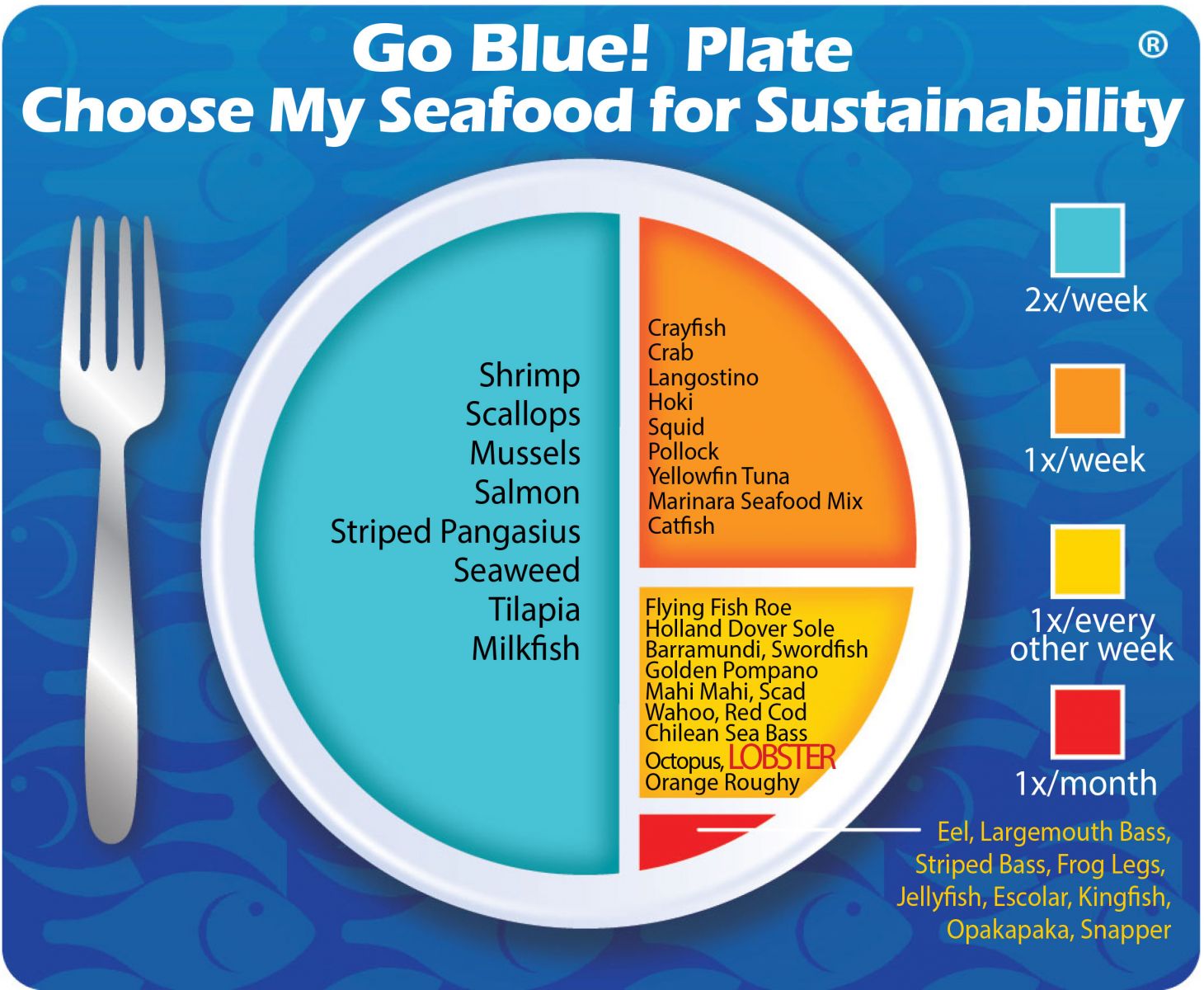
Sustainability Improvements NeededThere is a need for improved data collection; implementation of specific fisheries management regulations (e.g., quotas, gear restrictions, seasonal or area restrictions); and increased use of traps, which are potentially less harmful to sea floor habitats than trawls.
Actions that Sea Port is UndertakingSea Port has initiated tracing requirements from their Slipper Lobster suppliers that will start to pinpoint the vessel name (when available) that caught the Slipper Lobster, the catch method and the catch area. Collection of such data may help spur the eventual establishment of management schemes for this multi-species trawl fishery and also to encourage the greater use of traps. Sea Port believes that, in aggregate, choosing from a diverse variety of seafood is better for sustaining the world’s seafood resources and that Slipper Lobster should be a part of this variety.
We created the sustainability assessments for each of our seafood items in order to reveal the existing and potential environmental impacts and risks that are associated with producing them for human consumption. This allowed us to establish the starting position for each of our seafood items along our progressive Go Blue! Seafood Sustainability Spectrum®. These assessments are only a single snapshot in time and because of this, we will continue to assess and update the critical sustainability needs associated with our supply sources and issue updates to the Go Blue! Seafood Sustainability Spectrum® as needed. There is a growing global awareness for the need to assure the sustainability of farmed and wild caught seafood and because of this; all around the world positive changes are rapidly occurring at all levels of the seafood supply chain. We will continue to spread this growing awareness and work with our many industry partners to improve the sustainability of all seafood, which we believe is the ideal protein of choice to feed an ever growing world population. Our Go Blue! Seafood Sustainability Spectrum® serves as our compass and yardstick as we strive to move all our products forward to becoming more sustainable. Please join us in this committed quest and Catch Our Wave® to sustainability by choosing a diverse variety of responsibly produced seafood as part of your diet.
|


